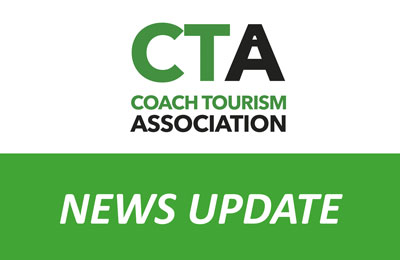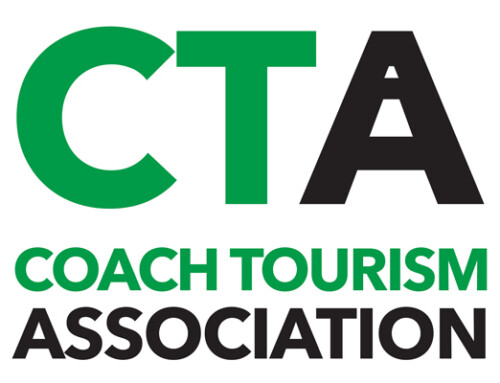COVID-19 Updates – week commencing 12/04/21
More updates of developments from the government and various links to interpretation and guidance.
Go to date:
12 April 2021 …
Tourism Alliance update:
The Government has set out the details of the traffic hight system that has been developed by the Global Travel Taskforce.
- Green: Arrivals will need to take a pre-departure test as well as a PCR test on or before day 2 of their arrival back into the UK but will not need to quarantine on return (unless they receive a positive result) or take any additional tests, halving the cost of tests on their return from holiday
- Amber: Arrivals will need to quarantine for a period of ten days and take a pre-departure test, a PCR test on day 2 and day 8 with the option for Test to Release on day 5 to end self-isolation early
- Red: Arrivals will be subject to restrictions currently in place for “red list” countries which includes a 10 day stay in a managed quarantine hotel, pre-departure testing and PCR testing on day 2 and 8
- There will also be a ‘green watchlist’ category of countries most at risk of moving from ‘green’ to ‘amber’ so that people can plan journeys accordingly
The Government will set out which countries are in each of these categories in early May, as well as confirming whether international travel can resume from 17 May 2021. The restrictions will be formally reviewed on 28 June 2021 to take account of the domestic and international health picture, and to see whether current measures could be rolled back. Further formal reviews will take place no later than 31 July and 1 October 2021.
- New Events Guidance
DCMS has published new events guidance that includes Step 2 and Step 3.
At Step 2
An event can take place if all three of the following conditions are met:
-
- The event takes place outdoors
- Attendees are expected to arrive and leave the event in a staggered manner throughout the day
- It does not involve attendees converging on and congregating in a site for a specific discrete performance or activity, such as a theatre or music performance, OR
Or the event is a drive-in performance or show.
Examples of events that fit this criteria include
- Agricultural/flower/garden shows
-
- steam rallies
- car boot sales
- community fairs/village fetes
- animal and pet shows
- funfairs and fairgrounds
- food and drink festivals
- drive-in cinemas and drive-in live performance events
At Step 3:
An event can take place where:
- People are likely to congregate in one area for the duration of the event.
- People are likely to enter or leave the venue in large numbers at a similar time.
Examples of events that fit this criteria include:
- business events such as conferences, trade shows, exhibitions, charity auctions, and private dining events such as charity or gala dinners and awards ceremonies, and corporate hospitality
- cinemas
- live performances
- circuses
- air shows
- historical /battle re-enactments
- live animal performances such as falconry displays at events
- non-elite and professional sporting events
All events recommencing at Step 3 will be subject to the following capacity caps:
- 1,000 people or 50% of a venue’s capacity, whichever is lower at indoor events
- 4,000 people or 50% of a site or venue’s capacity, whichever is lower at outdoor events
Capacity restrictions must be adhered to at any point throughout the event. For example, a theatre can admit over 1,000 people in a single day, but no more than 1,000 people at one time. If an event runs over the course of multiple days, no more than 1,000 people should be admitted at any one time over that period. If a single venue hosts multiple different events at one time, and the attendees of each event are separated for the duration of the event (for example, a cinema with multiple screens, or an exhibition centre hosting multiple business events), the 50% capacity cap will apply to each individual event, rather than the venue.
It is important to note that capacity limits refer only to customers. Staff, workers, volunteers, speakers, exhibitors etc are covered by the work exemption and are not included the capacity limit.
Events Guidance for Local Authorities
As a companion document to the guidance for businesses regarding Events, DCMS has also produced guidance for local authorities to use when assessing whether to give permission for events to take place. It is useful for businesses to be aware of this when entering discussions with Local Authorities on how their event should take place.
WTTC Impact Assessment
WTTC have [published their latest Economic Impact Report which finds that travel and tourism revenue fell from £238 billion (10.1% of UK GDP) in 2019 to just £90 billion (4.2% of GDP) last year. They have calculated that this fall in revenue has resulted in the loss of 307,000 Travel & Tourism jobs in the UK.
Quarantine Guidance Updated
The guidance for people quarantining at home after arriving into the country has been updated to clarify details on travelling to get a test swab taken and how people can raise issues related to the test product that they are using.
https://www.gov.uk/guidance/how-to-quarantine-when-you-arrive-in-england
VisitEngland Sentiment Tracker
VisitEngland has published wave 27 of their Consumer Sentiment Tracker which covers fieldwork conducted between 22-26 March.
Confidence and overnight trip intent are marginally down, as is the proportion expecting normality to return to their lives by the end of the year (50%). There is a higher proportion of spring trip intenders saying they have already planned and booked their overnight trips, which now stand at 50% and 44% respectively. However, bookings for summer trips remains flat at just 19%. 17% of adults now plan on taking a day trip within the next two weeks, which is significantly up on last wave.
Highlights from wave 27 include:
-
- The national mood is up 0.2 points to 6.7/10
- The same proportion consider the ‘worst is still to come’ compared to wave 26 (17%).
- The Appetite for Risk score is stable at 2.4/4, with ‘visiting a busy city centre’ having the lowest score among the various activities listed (also stable at 2.0).
- Almost half of adults anticipate taking more or the same number of overnight domestic trips between now and end of the year compared to normal. This compares with just over a quarter of adults with similar intent regarding overseas trips.
- Confidence edges down, with 33% fairly/very confident a trip booked for this June could proceed as planned (down 5 points)
- 14% anticipate taking an overnight trip this spring (Apr – June) rising to 35% during the summer (July – Sept). This compares to 16% and 37% respectively last wave.
- Among those who are intending to take a trip this spring, 50% have reached the planning and 44% the booking stages of their trips, which is up from 43% and 29% respectively last wave.
- The South West remains the lead destination for spring trips with a commanding 24% share; 12 percentage points ahead of second placed North West.
- The leading destination type for spring trips is ‘traditional coastal/seaside town’ (32%) narrowly ahead of ‘countryside or village’ (31%).
- The accommodation types most likely to be used on overnight trips this spring are ‘commercial rentals’ (e.g. holiday cottages) on 39%, ‘camping/caravan’ (37%), ‘Hotel/motel/inn’ (34%) and a ‘private home’ (also 34%).
- Some 43% of UK adults intend to take a day trip to a ‘traditional coastal/seaside town’ and 42% to a ‘countryside or village’ destination at some stage this spring/summer. This compares with 23% intending to visit a ‘large city’.
https://www.visitbritain.org/covid-19-consumer-sentiment-tracker
14 April 2021 …
Tourism Alliance updates:
Transport Use
DfT has released the transport data from this first day of Step 2. While this shows that there has been an uplift in the number of people travelling as a result of the easing of restrictions, there is still a long way to go be fore public transport use returns to normal. The figures show that:
-
- Bus use in London and outside London both rose about 15%, to respectively 60% and 51% of usual use.
- National Rail usage only increased by about 5% to 30% of usual
- Use of the tube in London increased by about 8% to 34%
https://www.gov.uk/government/statistics/transport-use-during-the-coronavirus-covid-19-pandemic
Deferred VAT Guidance Updated
HMRC has updated the guidance on deferring VAT payments by adding information on penalties or interest that may be charged if you do not pay in full or make an arrangement to pay and how you may still be able to avoid these charges.
The key information is that businesses may be charged a 5% penalty or interest if they do not pay in full or make an arrangement to pay by 30 June 2021.
https://www.gov.uk/guidance/deferral-of-vat-payments-due-to-coronavirus-covid-19
Local Authority Powers
The Government has updated the Guidance on the powers that local authorities have to enforce restrictions during the different steps of the roadmap. Local Authorities have three main powers:
- Coronavirus Improvement Notice (CIN)
A Coronavirus Improvement Notice can be issued by a local authority when a business is failing to fulfil a provision set out in the relevant coronavirus regulations relating to COVID-Secure measures. Failure to comply with a CIN by the end of its operational period could lead to a fixed penalty notice (FPN) of £2,000 and/or a Coronavirus Immediate Restriction Notice or a Coronavirus Restriction Notice being issued.
- Coronavirus Restrictions Notice (CRN)
A Coronavirus Restriction Notice will be issued by a local authority when there has been a breach of the provisions of the relevant coronavirus regulations, and a recipient has failed to comply with the terms of a Coronavirus Improvement Notice, where this non-compliance creates a risk of exposure to coronavirus. Failure to comply with a CRN during its operational period will result in an FPN of £4,000 being issued and a new CRN or Coronavirus Immediate Restriction Notice may be issued.
- Coronavirus Immediate Restrictions Notice (CIRN)
A Coronavirus Immediate Restriction Notice can be issued by enforcement officers where rapid action is needed to close a premises or restrict an activity to stop the spread of the virus, without first issuing a CIN to stop the spread of the virus. Closure will be for a 48-hour period initially. Failure to comply with a CIRN will result in an FPN of £4,000 being issued.










